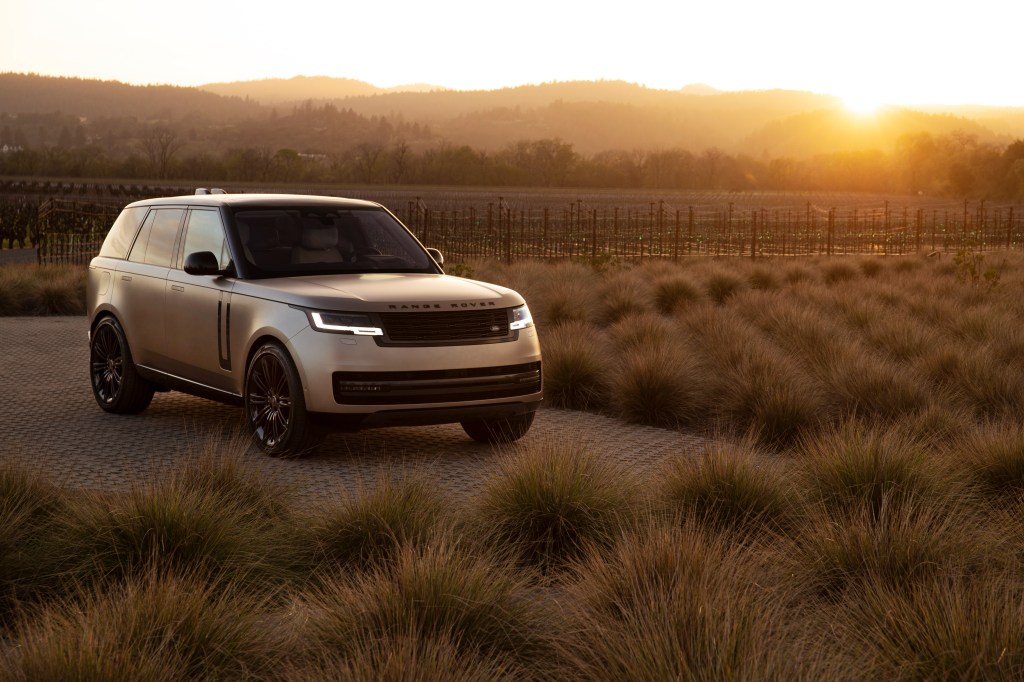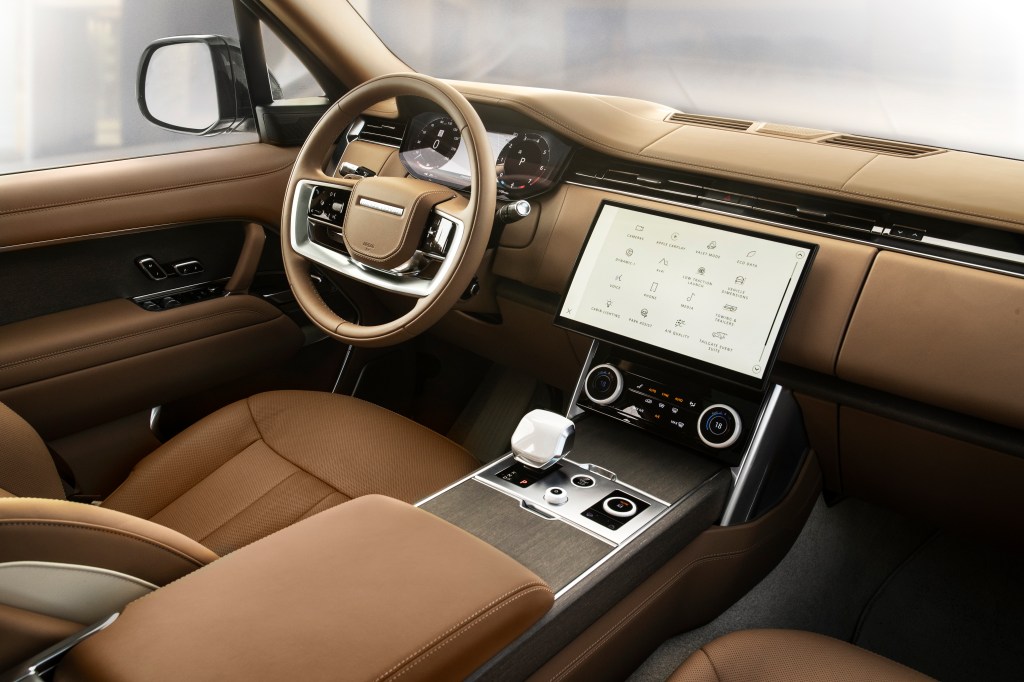How many of these features did you know were in Range Rover’s new luxury flagship SUV?

It’s been nine years between Range Rover models. In that time, competitors have been nipping at the heels of the British marque, vying for a piece of the luxury SUV segment it forged some five decades ago. As Aston Martin, Bentley, Porsche, Audi, Rolls-Royce and even now Lotus, of all brands, try their hand at stealing a little bit of Range Rover’s spotlight, the sophisticated fifth-generation Range Rover arrives to set the bar again. This time, it comes armed with the technology to match its high-level refinement, design ingenuity and variety of offerings —which includes a three-row option; diesel, petrol, plug-in-hybrid and soon, fully-electric powertrains; and the new Range Rover Sport sibling car.
Here, we round up five of the most impressive technologies found in the all-new modernist luxury icon.
1. Driver distraction reduction
As demand for connectivity in our cars increases, so does the risk of driver distraction. This has been an issue that Jaguar Land Rover has been actively working on with various academic and research partners for more than a decade. The OEM’s latest technology to combat this makes its debut in the new Range Rover via the new iteration of its award-winning Pivi Pro infotainment system. The system, controlled via an elegant and seamless 13.1-inch curved floating screen with integrated Amazon Alexa (plus wireless Android Auto and Apple CarPlay, and Spotify), can be personalised so that 90 per cent of tasks can be accessed within two taps. Along with haptic feedback, some steering wheel controls and a head-up display, the system is holistically designed so that owners’ eyes will rarely need to leave the road. The Range Rover can also receive over-the-air updates to ensure its technical systems always perform with the latest security and technological advancements.
2. Mind-blowing manoeuvrability
Fun fact: At 10.95m in the short wheelbase and 11.5m in the long wheelbase, the Range Rover’s turning circle is slightly tighter than a modern hatchback’s. How? All-wheel steering. The rear axle’s steering is electrically assisted and provides up to 7.3 degrees of angle. At speeds above 50km/h, the rear axle turns with the front wheels, helping to give the Range Rover more stability and performance on different terrains, maintaining a better line on soft surfaces and more confidence on the highways. With 2454kg to 2505kg of car (depending on your specification), that extra stability is a thankful bonus. At low speeds, the rear can turn out-of-phase of the front wheels for enhanced agility when needed. This might not seem impressive on paper, but it allows for incredible manoeuvrability through laneways, when parking or navigating a variety of tight urban areas. For what it’s worth, this is a feature very few SUVs this size can claim.
3. Extra eyes on the road
In addition to the all-wheel steering, Range Rover has come up with even more solutions to make life easier for its city-dwelling customers, offering some relief for those considering the 23-inch wheels on the higher end of the options list. Working in tandem with the vehicle’s 360-degree 3D Surround camera, which provides a 3D exterior or kerbside perspective of the car by sticking four camera angles together, the Range Rover is also equipped with unique manoeuvring lights. These LED downlights appear on each side of the vehicle and, at low-speeds, help shape what Range Rover calls a ‘carpet’ of illumination as a guide. The Range Rover’s cameras, including the rearview camera (which gives the driver the option of both a mirror and digitalised camera screen), have a special hydrophobic coating, helping with visibility in wet and even muddy conditions. In addition, the Range Rover’s latest generation of Remote Part Assist allows it to be moved in and out of parking spaces without a driver inside the vehicle.
4. Added Wellness
With health, immunity and air pollution being a growing concern, Range Rover has built upon its existing air pollution technology to offer more advanced cabin air purification technology.
Using dual-nanoe X, CO2 management and PM2.5 Cabin Air Filtration technology, the system can reduce odours, bacteria, allergens and other airborne nasties, including COVID-19. T
The dual-nano X technology itself is so mind-bendingly advanced, virus particles don’t need to pass through a filter. Instead, air from the cabin is condensed to form tiny electrically charged particles, producing trillions of hydroxyl (OH) radicals, enveloped in nano-sized water molecules, that react with virus and bacteria proteins. Building on the move to help limit driver distraction we discussed earlier, the CO2 management side of the system monitors carbon dioxide in the cabin. It selectively introduces fresh air as needed to keep the driver alert. For those curious about the state of the atmosphere, air quality levels (inside and out) are shown on the central touchscreen. In short, this is the new gold standard for reducing pollutants.

5. Opulent materials
Technology doesn’t just cover the things powered by microchips; it also extends to comfort and aesthetics. It took many years of engineering and manufacturing leaps and bounds just to be able to achieve the new Range Rover’s seamless exterior, which helps it appear much slimmer than its 2.2m width. That material technology appears inside, too, with new materials on offer a fresh sense of modern luxury to the Range Rover ownership experience. These include cool-to-touch ceramics developed from techniques used in watchmaking, incredibly beautiful hand-laid mosaic marquetry, buttery near-aniline leather, high-end and sustainable UltrafabricsTM leather alternative (which is 30 per cent lighter and generates only a quarter of the CO2 in its production than leather) and Kvadrat Remix wool-blend textile, a luxury fabric adored by the high-fashion and furniture/design industries. The top-tier Range Rover SV, elevates these materials through cosseting seats with 24-way adjustment and massage functionality and a beautiful, electronically-deployable Club Table, which rises out of the rear centre console at the touch of a button with drama aplomb.
The new Range Rover is priced from $220,200 (plus on-road costs). Some of the features mentioned in this article are optional extras. For more information, visit https://www.landrover.com.au/